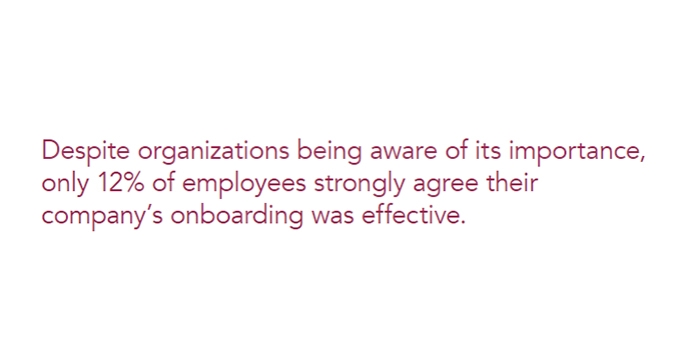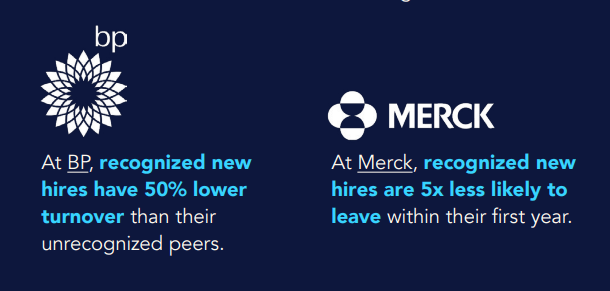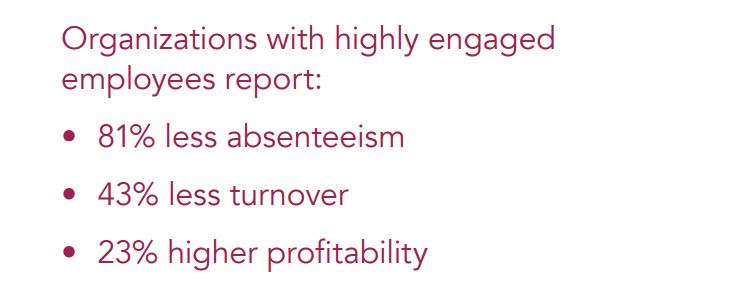7 Step Recruitment Process: A Step-by-Step Guide to Hire Top Talent

The recruitment process is a vital step in sustaining a successful business. Attracting and hiring the right applicants can make or break your company.
When an organization develops an efficient and thorough recruitment process, it saves time and money. This article will guide you through a step-by-step recruitment process that will help you hire the best talent for your open roles.
Let’s get started.
What is the recruitment process?
A recruitment process involves finding, selecting, and accepting a new employee in an organization. This hiring process is typically the responsibility of the HR department.
The recruitment process is an organization-specific task. Steps may vary from company to company, but there is a general talent assessment framework to follow. This framework ensures consistency in evaluating candidates, helping organizations make data-driven hiring decisions.
To do it, organizations have to create a recruitment plan and determine the duties of a recruit. Then your company will advertise the position in various channels to attract applicants. Screening and selection, job offering, and onboarding will follow.
To ensure your recruitment process is working well for your organization, regular reflection and evaluation are a must for continuously improving your procedures.
An effective and well-developed recruitment process helps you save time, keep employees engaged, and enhance the performance of your recruit.

Importance of a structured HR hiring process
Companies often cut corners when it comes to the recruitment and selection process. This is because hiring an employee has its costs. According to a survey of 210 CEOs conducted by Harvard Business School, it takes up to six months before your organization can break even on a new hire.
A capable recruit can give you a higher return on your investments. In the long run, it’s better to have a structured hiring process and well-trained HR professionals.
A well-thought-out recruitment process is crucial for obtaining the right candidates. Your HR department should create a positive candidate experience. This will expand your pool of candidates and increase your chances of retaining the best employees.
Plus, it has an impact on your company culture. With a structured process in place, you can avoid costly turnover risks and build strong ties within your organization.
What are the seven steps in the recruitment process?
The seven steps in the recruitment process include identifying your hiring needs, preparing the job description, developing and executing a recruitment plan, searching for talent, screening and shortlisting talent, the interviewing process, checking references and making an offer.
Whether you use recruitment process outsourcing (RPO) or not, there are ways to improve efficiency. With an effective recruitment process, you can maximize the possible job seekers and create a large talent pool. You can highlight your organization’s professionalism and engage your prospects.
Luckily, you can brush up on tips to optimize recruitment. These eight recruitment process steps will help you get the best potential candidate.
Let’s dive in.
Step 1: Identify the hiring needs
The process of finding and hiring a recruit starts with identifying a vacancy. Determine your hiring needs by figuring out if there are any gaps in your workforce.
Through job analysis, you gather data from selected jobs. During this process, you find out what tasks your current employees perform. You then evaluate the gathered data to create a new job specification. A job analysis questionnaire can help.
Additionally, you should create a job diagnostic survey to assess the job characteristics before making a job description. This will help you determine the qualifications, skills, and experiences you need to find the right candidate.
Use these methods you can use to identify if there’s a hiring need:
- Regularly evaluate your employees’ performances.
- List any missing qualities, proficiencies, and skills required for the next hire.
- Check if you have to replace any employees leaving the company.
- Track each individual’s workload and identify if there’s a need for more support.
- Consider an expanding business and the state of the economy.
Step 2: Prepare the job description
A comprehensive job description helps in attracting suitable candidates. It’ll allow you to address unique recruitment needs and hire employees who meet the demands of a job role.
Fixed job descriptions are outdated. Instead, consider agile applicants and focus on flexibility and adaptability. The new hire should know that their tasks may evolve and change each day.
A job description should include the following elements:
- Job title
- Duties and responsibilities
- Qualification and skills required
- Compensation and benefits
- Job location
Keep an ideal candidate in mind when creating your template. When you build a candidate persona, you define the characteristics and traits that make up the right talent for your business. This lets you make relevant job descriptions and get more applications. It also serves as a guide so potential applicants know what they should write on their resume or cover letter.
Step 3: Develop and execute a recruitment plan
Recruitment has many stages and involves several people. Visualizing your recruitment process can help your team focus on a single goal.
A detailed recruitment plan helps you stay organized. In developing a recruitment strategy, you should keep track of details such as career fairs and social media listings. Don’t forget to involve your employees when possible.
Internal recruitment is a great resource when it comes to filling vacancies. It can help you find hidden gems within your organization. Additionally, establishing an employee referral program can save your recruiter time.
An applicant referred by your employee is 15 times more likely to get hired, and 80% of recruiters say referrals lead to better-quality hires. Having your employees spread the word about a job posting can help attract top talent.
Step 4: Search for talent
The talent search is an integral step when you build a recruitment process.
To do it, you’ll need source activation and get the manager to permit a candidate search. Next, you have to decide on a selling method. Choose the best platforms or websites to post the job listing. Consider the following sources for your talent search.
Internal sources
This is when you source employees from within the company. It can include promotions, department transfers, and rehiring retirees. A side effect of internal sourcing is it motivates your current employees and increases their job satisfaction.
External sources
External sources are applicants that you get from active recruitment. It includes job fairs, advertisements, and direct recruitment.
According to a January 2016 Glassdoor U.S. Site Survey, people are 69% more likely to apply to employers who manage their brand. This means taking the time to improve your image is worth the effort.
Step 5: Screen and shortlist applicants
The screening process is when you review resumes to filter out the best candidate. In short, this step is when you remove unqualified applicants through an interview process.
To start, you should review each resume and sort them based on qualifications. This step is important because it’s when you determine an individual’s suitability for your vacancy.
Take note of the reason a potential hire is leaving their current job, and pay attention to gaps in employment. Next, separate your preferred applicants and place them on a shortlist. You may use an ATS or applicant tracking system to simplify the selection process.
Finally, if the recruit has a question, this is when you flag concerns for clarification during the interview.
Step 6: Interview process
The interview is a crucial step of the recruitment process. This is when a hiring manager assesses a shortlisted candidate’s competency and checks if they fit with the company culture.
There are advantages to having many interviewers. For one, it eliminates any personal bias from hiring managers. It’s also great for technical roles since you can ask the different department heads to test an applicant’s knowledge.
Bear in mind that an interviewee can reject your offer if they have a negative experience during this stage.
Here are some topics to focus on in an interview:
- Determine how an individual responds to stressful situations.
- Learn how a recruit works in a team setting.
- Ask an applicant’s expectations from the organization.
- Verify if all the information on the resume is accurate.
You can do the interview process in person or through video call, depending on what’s convenient. It’s worth noting that shortening this step has its perks.
According to the “Hiring for Attitude” study by Leadership IQ, which studied more than 20,000 new hires, 82% of managers say interviewers miss red flags because of distractions and a lack of time. Creating an efficient recruitment process lets employers give candidates honest feedback.

Step 7: Check references and make an offer
It can be damaging to your company when applicants exaggerate and overstate their credentials. This is why you have to conduct background checks on the top candidates.
Checking references is the last filtering step in the recruiting process, and you should take it seriously. In this step, you gather information about the recruit and confirm their interview responses. Calling a third-party observer is the easiest way to get an unbiased review.
Once the qualified candidates pass, you can then make an offer. A job offer is when you inform potential hires that you’ll accept them into the company. It’s best to do it quickly since many people apply to other organizations as well. Try to do it within the same day of your decision.
There is a proper way to make a job offer. You can do it through phone calls or email as long as you show enthusiasm about having the new employee on board. Quickly address any of the applicant’s concerns and discuss salaries and benefits.
Following these steps will help you receive a positive response from a new hire.
Phase 8: Introduction and induction of the new employee
Hiring doesn’t stop when an employee accepts your job offer. It’s a vital moment when you begin socially recognizing your new hire.
The introduction phase lets you motivate new employees and boost their performance. It’s the step where you reinforce your company culture and provide them with the knowledge they need to excel.
In this final stage of the recruitment process, you’ll settle on a start date and begin your new hire checklist. You also start the contract signing, provide a welcome kit, and assign a mentor to the recruit. Your goal is to support the new employees so they can adjust quickly and become an asset to the organization.
Benefits of a structured recruiting process for an organization
Aside from finding an ideal candidate, here are the benefits of having a structured recruitment process.
Saves time
Having a well-structured recruiting process can give your recruiter time to focus on more important matters. Did you know that 90% of applicantsOpens in a new tab use mobile phones to search for job opportunities? You can use technology and mobile-friendly approaches to create an efficient hiring process.
Streamlining the application process saves time and enhances the experience of job candidates.
Engaged employees
Engaging your employees so they contribute to filing vacancies is one of the best strategies for the selection process. Employee referral programs are 70% more effective than other recruitment channels.

Proactive recruiting
Proactive recruiting is when the HR team engages prospects even without a vacancy. It’s one of the best recruitment strategies because it allows you to maintain a talent pool. Here, your recruiter can review and refine strategies to get high-quality hires.
Maintaining your brand by posting relevant content on social media can influence new hires. If you make the work environment less transactional and more human, you will attract applicants.
Improved performance
A streamlined and efficient recruitment process will help you better evaluate a candidate’s skills and predict their productivity. In addition, the introduction phase lets you recognize new hires and drive performance.
The best part is that skillful recruiters can use the interview process to see an applicant’s strengths and limitations.
How can HR improve the recruitment process in an organization?
To have a good recruitment process, it’s necessary to use recruitment technology and have an in-the-know and educated HR team.
To learn effective strategies, consider attending events like the Workhuman® LiveOpens in a new tab, a game-changing conference for all who attend. The experience is learning-focused and will feature actionable content and workshops on progressive topics. Participants will leave the event inspired to make work more human for everyone, everywhere.
FAQs
What is the candidate management process?
The candidate management process is a method to reduce admin work and company costs on a recruit. Yet, at the same time, you increase the quality of employees. You can do this with tools like the ATS to streamline recruitment.
What is 360 recruitment?
The 360 recruitment method is an inclusive approach to finding a recruit. It involves preparing, sourcing, screening, selecting, hiring, and onboarding processes. Each stage has control points that increase your chances of getting the right kind of candidates.
Conclusion
The recruitment process plays a vital role in the success of a business. Through finding, selecting, and accepting top talent, you can save time and engage your employees. Giving your candidates a good onboarding experience can increase your company’s productivity.